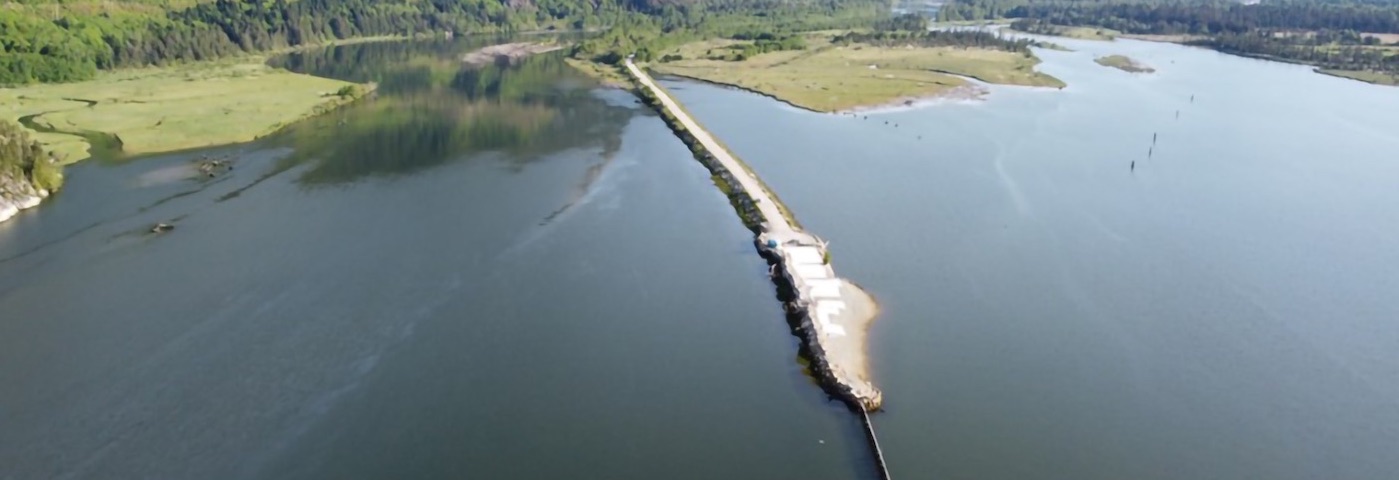
Monitoring Juvenile Salmon Movement to Evaluate Estuary Restoration Effectiveness
In 2019, the Squamish River Watershed Society (SRWS) in British Columbia engaged InStream Fisheries Research Inc. to assess the ability of juvenile Chinook salmon to pass through fish passage upgrades to enter the estuary of the Squamish River. In the Squamish River watershed, estuarine access has been significantly reduced by a berm known locally as “the Spit” that separates the river from the estuary. Previous research has shown the old culverts connecting the river and estuary are ineffective for fish passage.
Challenge
While the research conducted during the 2019 season was important and provided a good basis upon which to build, researchers Stephanie Lingard and Katrina Cook were limited to tagging yearling fish that were raised in a hatchery. They tend to behave differently than wild sub-yearling salmon that are theorized to require an estuary rearing period before ocean entry. Also, the smallest tag available at that time was too large to be safely implanted in a smaller fish, prohibiting the study of an important segment of the population.
Solution
In 2020 the introduction of Innovasea’s new V3 tag, which features 307 kHz technology and is the smallest tag on the market today, presented the team with a unique and exciting opportunity to study much smaller sub-yearling juvenile Chinook salmon. In addition, the implementation of an extensive wild salmon capture program enabled the researchers to tag animals in their natural habitat.
The longer battery life of the V3 tag also allowed researchers to monitor the fish for almost 100 days – more than three times longer than the tags used in the previous study. This extended tag life proved valuable as river residency times were longer than expected and the team also learned more about habitat use during estuary residency.
Results
Of the 100 wild juvenile Chinook salmon tagged with V3 tags and released in the Squamish River, 27 entered the estuary. Two of these entered via a new three-meter diameter box culvert while the rest migrated around the Spit to access the estuary from Howe Sound. The data indicated that the new culvert was a modest improvement over the old one and that access is likely to be further improved with larger breaches in the spit.
The research team has recommended that SRWS continue the acoustic telemetry and fish capture programs as restoration efforts progress to better understand changes to fish access and how fish passage projects influence habitat usage.

Want to learn more?
Contact Innovasea today to find out how our fish tracking experts can help with your next project.
